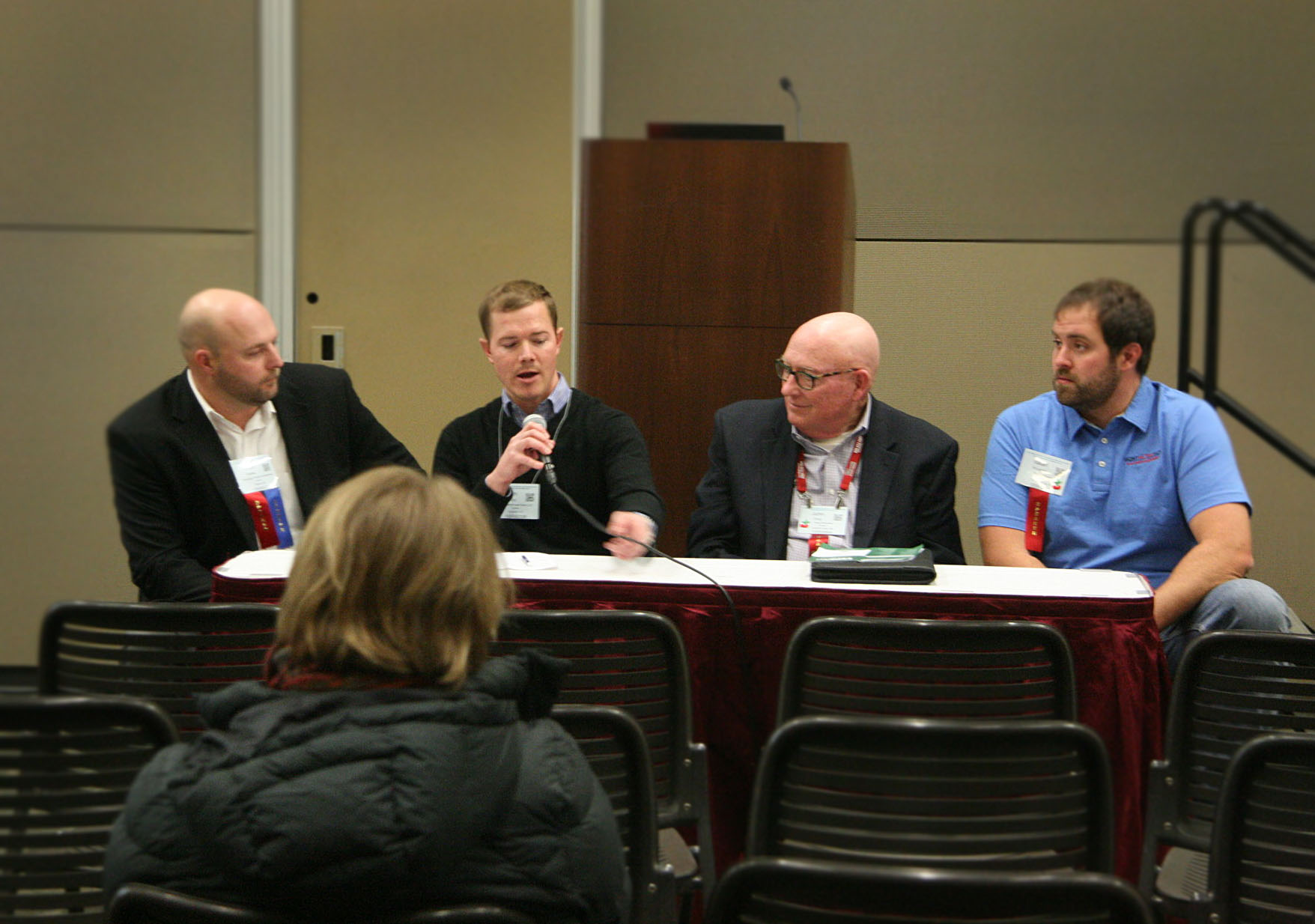There was good news and bad news for cherry growers at the second day of the Great Lakes Fruit, Vegetable, and Farm Market Expo in Grand Rapids, Michigan.
The good news is that there is a strong market potential for fresh market sweet cherries from consumers who want local fruit, a panel of Michigan cherry growers agreed.
Growing those sweet cherries to size and quality standards to compete with Northwest cherries is still a challenge, but Michigan growers are figuring out how to do it. Some are experimenting with converting processing sweet cherry trees to fresh market production and others are planting new high-density systems with the latest varieties.
“If we can do the job quality-wise, I think we can get that premium on local fruit,” said Justin Finkler, operations manager for Riverridge Produce in Sparta, Michigan. Riverridge plans to plant 40,000 new cherry trees over the next few years.

Michigan consumers want local sweet cherries, so there is good money to be made in fresh production if Michigan growers can deliver top quality, said growers on a sweet cherry panel, including, from left to right, Justin Finkler of Riverridge Produce; Adam Dietrich of Leo Dietrich and Sons; John King, of King Orchards; and Isaiah Wunsch, of Isaiah Wunsch Farm. (Kate Prengaman/Good Fruit Grower)
Isaiah Wunsch, who grows in Traverse City, said that the fresh market price is pushing him to adapt his traditional dark sweet orchards for fresh production with more aggressive pruning. “Irrigation is essential to meet the size specs on standard trees,” he said.
The bad news for cherry growers is the threat from Spotted Wing Drosophila, which had a very high pressure year in 2017. Growers at risk, including those with tart cherries and later sweet cherries, need to use the products rated as excellent and be sure not to stretch application intervals.
“I think you carefully need to consider the tradeoff between efficacy and cost. Lost cost pyrethroids should be used early or right before harvest, don’t use them at that key time 10 to 14 days before harvest,” Michigan State University entomologist Larry Gut said at the tart cherry session. “Don’t rely on them for a long period, past 7 days is problematic for pyrethroids in particular.”
Research suggests that SWD can also target plums, peaches, and nectarines, but it doesn’t infest those fruit until they become quite soft, so that “unless you leave them on the tree until they are practically dripping,” peach growers may not have to worry about the pest, said MSU extension educator David Jones.
That relationship with firmness is not as clear in sweet cherries, said MSU extension specialist Nikki Rothwell.
Her research is showing that SWD appears to like sweet cherries best when they are ripening, but not fully ripe. Luckily, for most varieties, pest populations are still typically low at that stage of development, but Rothwell warned that SWD seems to be creeping earlier every year, so sweet cherry growers may not be safe for long.
“It is horrendous, definitely the worst insect I’ve dealt with in my 40 years,” Gut said.
– by Kate Prengaman






Leave A Comment